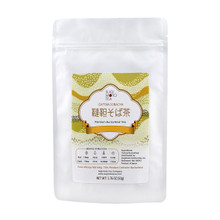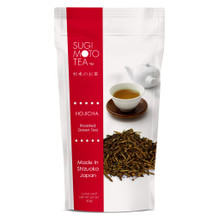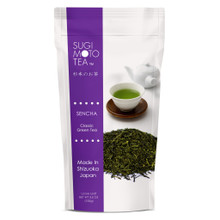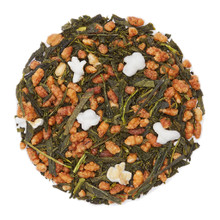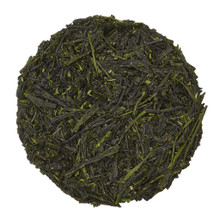Risogama and the Art of Arita-yaki
A Story of Craftsmanship and Heritage Through Generations
Arita-yaki, one of Japan’s most celebrated pottery traditions, holds a special place in both the world of ceramics and Japanese tea culture. As Japan’s first porcelain, made in the 17th century, Arita-yaki has long been admired for its beauty and craftsmanship. At Sugimoto Tea, we are excited to share the exquisite works of Risogama, an esteemed Arita-yaki kiln, with our customers. This collaboration was deepened during our recent trip to Japan, where we had the opportunity to visit Risogama and meet its president, Shinji Terauchi. This blog will explore the history of Arita-yaki, its connection to tea, and the artistry behind Risogama’s pieces.
Arita-yaki: Japan’s First Porcelain
The story of Arita-yaki begins in 1616 when Yi Sam-pyeong, a Korean potter, discovered porcelain stone in the mountains of Arita, Saga Prefecture. This discovery marked the start of porcelain production in Japan. During this time, tea culture was growing, especially among Japan’s samurai class, and many Arita-yaki pieces naturally became part of tea ceremonies. Arita-yaki’s refined beauty and unique craftsmanship quickly attracted attention outside of Japan as well, with European markets eager to import this fine porcelain.
During our recent visit to Risogama in May 2024, we were struck by how Arita-yaki continues to blend tradition with modern innovation. Arita-yaki remains one of Japan's "Big 3 Potteries," and it was inspiring to see how this centuries-old craft is still thriving today.
The Story of Risogama
Risogama’s history is deeply intertwined with the development of Arita-yaki. The kiln was founded by Shinichi Terauchi in the mid-Meiji era, when he relocated to Arita to teach at one of Japan’s first schools dedicated to pottery. In 1897, Shinichi acquired the land where Yi Sam-pyeong, the father of Arita-yaki, once lived, paying homage to this legacy by naming the kiln “Risogama” (using the same kanji from Yi Sam-pyeong’s name). Over the years, Risogama has been passed down through the Terauchi family, with the current president, Shinji Terauchi, representing the fourth generation. What sets Risogama apart is its ability to balance tradition with innovation. In the 1950s and 60s, the kiln gained prominence by producing pottery for Japan’s booming hotel industry. However, in recent years, Shinji has shifted the focus towards more personalized, handcrafted pieces that emphasize the connection between the maker and the customer. This renewed focus on craftsmanship and individuality is something we are proud to share with our customers.
The Techniques and Craftsmanship Behind Arita-yaki
Arita-yaki’s enduring appeal comes from the artistry and techniques passed down through generations. One of the notable techniques used at Risogama is fukizumi, where artisans blow color onto porcelain using a pipe, brush or flicking fingers. This intricate process requires great care and precision, contributing to the unique beauty of each piece.
Another signature process at Risogama is the application of silver to the porcelain. The silver is carefully painted on after the initial firing and then baked again at high temperatures, creating delicate, intricate patterns. This labor-intensive process is most evident in their silver houhin, which feature beautiful silver detailing, all hand-carved and unique.
These methods reflect Arita-yaki’s adaptability, evolving over the centuries while preserving its core traditions. Whether it’s a houhin teapot or another piece, the craftsmanship behind Arita-yaki makes each item not just functional but also a work of art.
Bringing Arita-yaki Into Your Tea Ritual
For today’s tea enthusiasts, Arita-yaki teawares offer a meaningful way to connect with Japan’s rich tea culture. The houhin teapot, for example, is a handleless vessel designed for brewing high-quality Japanese teas like gyokuro or sencha. It’s favored for its ease of use and elegant design.
In a world where convenience often takes priority, there’s something special about slowing down to brew tea in a handcrafted houhin. The care that goes into each Arita-yaki piece invites mindfulness, allowing you to appreciate the artistry behind both the tea and the teaware.
While Arita-yaki is highly durable, we recommend hand washing to preserve the intricate craftsmanship, especially for pieces with silver detailing. This ensures that your teaware remains in pristine condition for years to come.
The Future of Arita-yaki and Risogama
As Arita-yaki continues to evolve, Risogama remains at the forefront of innovation while staying true to its roots. During our visit, Shinji Terauchi expressed his commitment to pushing the boundaries of what Arita-yaki can be, exploring new forms and techniques that resonate with modern tea drinkers.
At Sugimoto Tea, we are excited to offer a selection of Risogama’s Arita-yaki pieces to our customers in the U.S. These pieces not only carry centuries of tradition but also represent the future of Japanese tea culture. Whether you’re an avid tea enthusiast or someone looking to add a beautiful, functional piece to your tea ritual, Arita-yaki offers a perfect blend of heritage and craftsmanship.
Arita-yaki reflects the rich history and culture of Japan, with Risogama continuing to honor these traditions while embracing modern creativity. Through our collaboration with Risogama, we invite you to explore the artistry of Arita-yaki and bring a piece of Japan’s ceramic heritage into your home.















